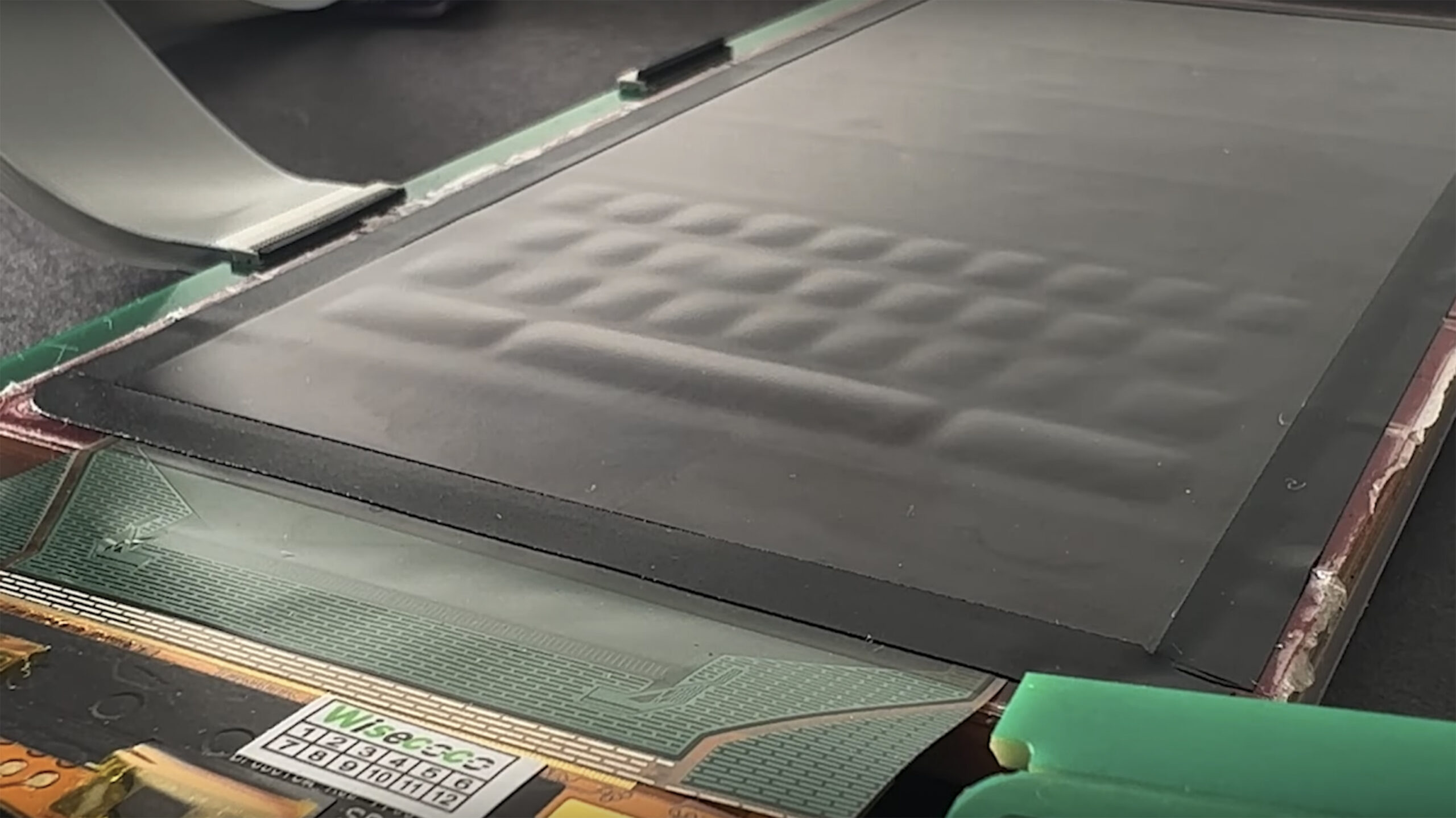
Researchers from Carnegie Mellon University are pushing the limitations of OLED panels by creating a touchscreen device that you can actually feel.
The technology, called Flat Panel Haptics, has been detailed in a new paper submitted by Carnegie Mellon University. It’s being looked into at the ACM CHI Conference on Human Factors in Computing Systems in Hamburg, Germany.
Although similar iterations have been attempted by larger companies, such as Apple’s Taptic engine, this prototype allows users to find virtual buttons solely through touch. A major reason that most laptops still feature fully tactical keyboards despite having the technology widely available for touchscreens comes down to the ability for users to get more done when relying on touch alone.
The video below gives an in-depth look into the electroosmotic pumps being used in the prototype.
This concept has been attempted by other companies before, most notably by Bosch and its automotive touch screen. Often, it works by having bumps coinciding with on-screen buttons temporarily form on touchscreen panels providing tactile feedback to users. The primitive design is noted as being clunky, making pocket accessibility for something like a phone a challenge.
The researchers have managed to get the pop-up buttons to measure almost five millimetres in height, with enough pressure and rigidity to make them feel solid when pressed.
Current OLED panels are not quite flexible enough to allow for structures that large to pop up. However, when layered with new embedded electroosmotic pumps, a bump can still be formed for a user’s finger to differentiate between the on-screen display’s keys.
Although there are still some limitations on how a fully tactile touchscreen would be implemented into tech products if the pop-up buttons are eventually scaled down to fit as pixels on an OLED display, it could be a major breakthrough in everything from phone keyboards to automotive infotainment systems.
Image credit: Future Interfaces Group (Screenshot)
Source: Carnegie Mellon University’s Future Interfaces Group Via: Gizmodo
MobileSyrup may earn a commission from purchases made via our links, which helps fund the journalism we provide free on our website. These links do not influence our editorial content. Support us here.


